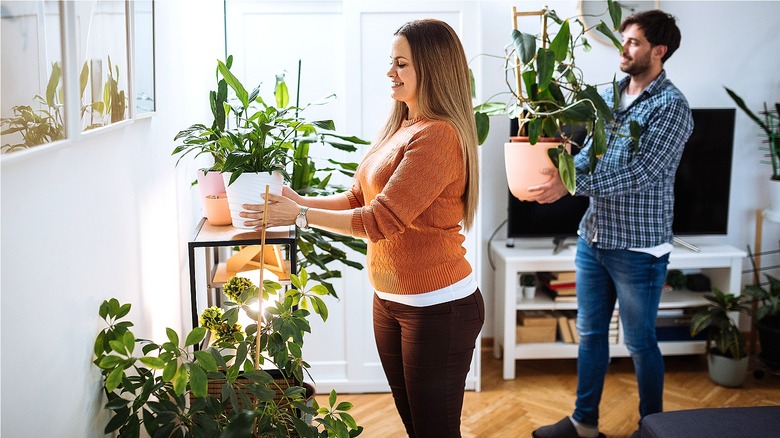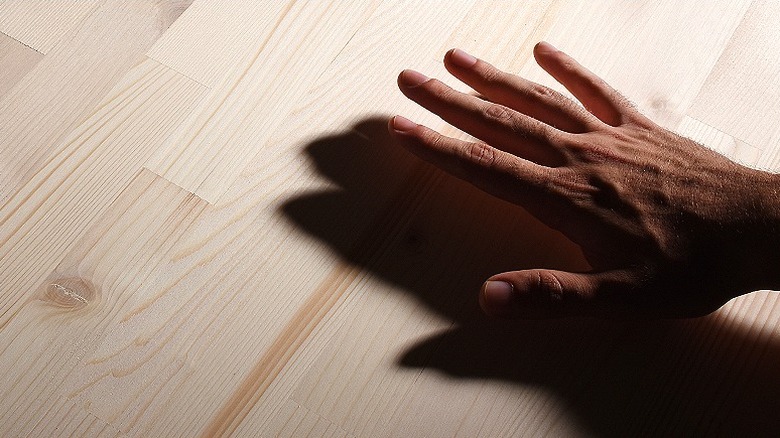Use This Simple Trick To Find The Best Location For Your Houseplants
Indoor plants are a welcome addition to a home and they work wonders for the inhabitants. In return, they just ask for some water and adequate light — natural or artificial — to grow and bloom. While water is, of course, necessary to keep the plants hydrated, light provides them with the energy they need to develop and carry out photosynthesis. A lack of light will hinder the plant's growth, cause the leaves to lose their natural tone, and force them to shed leaves to conserve as much energy as possible. On the other hand, too much light will burn them and bleach their cells. For this reason, it's important to find the best location in your home for your specific houseplant(s) — and you can employ a simple trick to do so: the shadow test.
Since different types of plants require varying degrees of light, you won't be able to put every plant in the same spot. You need to figure out the best spot for each so the plant receives the right amount of light exposure, as well as kind (i.e., indirect versus direct). To determine this, you can either invest in a light meter to gauge the intensity of the brightness and place the plants per their individual needs. Or you could use your hands to employ the shadow test to find the best spot for your houseplants.
How to conduct the shadow test
To conduct the shadow test and find the best location in your home for your houseplants, single out a sunny day and throw open the windows to the room where you're considering keeping the plants. Then, place one of your hands about 1 foot above the potential surface and spread out your fingers. Now, judge the shadow cast by your hand. This will help you understand the amount of light the surface receives. For instance, if the shadow is dark and defined, it receives bright, direct sunlight. Alternatively, if the shadow is less pronounced, it may be receiving medium or indirect light. In case there's no shadow or a very faint one, then the surface might not be receiving much light at all.
In case you don't have a surface to conduct the shadow test, hold a white paper with one hand and place the other one in front of the paper to gauge the intensity of the light. It's best to conduct this experiment at midday when the sun is at its highest position in the sky and shines the brightest. This test will help you decide how much light a surface or spot receives in a room and allow you to determine the best location to display your houseplants. For instance, while you'd want to place cacti and succulents under direct sunlight, snake plants, pothos, and other tropical species are plants that will thrive in low light.

